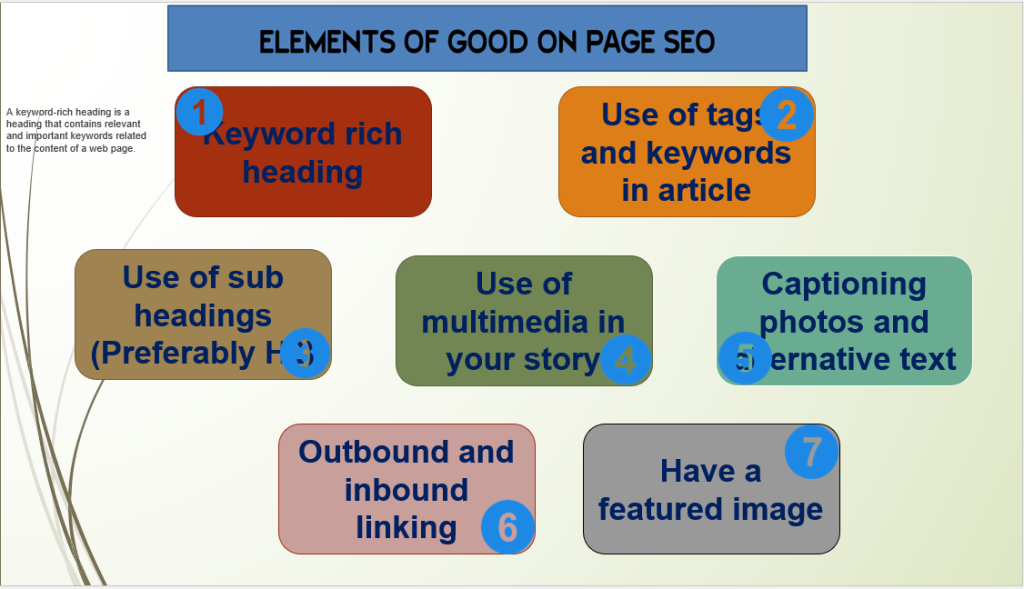In the fast-paced digital landscape, ensuring that your web content is well optimized for search engines is essential for attracting organic traffic, increasing visibility, and ultimately achieving your online goals. Search Engine Optimization (SEO) is the key to success, and it involves a multitude of strategies and techniques that help search engines like Google understand and rank your content. In this comprehensive guide, we’ll explore the best practices and techniques to ensure your web content is well optimized with SEO.

The foundation of SEO begins with thorough research and the selection of relevant keywords. Here’s how you can go about it:
a. Keyword Research: Use tools like Google Keyword Planner, Ahrefs, or SEMrush, UberSuggest, H-Supertools to identify high-potential keywords that align with your content.
b. Long-Tail Keywords: Incorporate long-tail keywords, as they are less competitive and can attract a more specific audience.

c. Competitor Analysis: Study your competitors’ content and identify the keywords that are driving traffic to their sites.
- High-Quality Content
Creating valuable, informative, and engaging content is a critical aspect of SEO. Here’s what you need to consider:
a. Originality: Always produce unique content. Plagiarized or duplicate content can harm your SEO efforts.
b. Relevance: Ensure your content is relevant to the keywords and topic at hand. Stay on point and provide useful information.
c. Length: Longer-form content often performs better in search results, but it should maintain quality and relevance.
- On-Page SEO
On-page SEO focuses on optimizing individual pages for search engines:
a. Title Tags: Craft compelling and keyword-rich title tags for each page.
b. Meta Descriptions: Write persuasive meta descriptions that include keywords and encourage clicks.
c. Headers: Use appropriate header tags (H1, H2, H3, etc.) to structure your content and improve readability.
d. URL Structure: Create clean and descriptive URLs that include relevant keywords.
e. Keyword Placement: Incorporate your target keywords naturally throughout your content.


With the increasing use of mobile devices, it’s crucial to ensure your content is mobile-friendly:
a. Responsive Design: Use a responsive design that adapts to various screen sizes.
b. Page Speed: Optimize your website for quick loading on mobile devices.
c. Mobile Usability: Test your site on mobile devices to ensure a user-friendly experience.
- Link Building
Building high-quality backlinks is an essential aspect of off-page SEO:
a. Internal Links: Link to other relevant pages within your website to improve navigation and SEO.
b. External Links: Include outbound links to authoritative sources, and they may reciprocate with backlinks.
c. Guest Posting: Collaborate with other websites to create content in exchange for backlinks.
- User Experience
A great user experience is fundamental to SEO:
a. Site Navigation: Make your website easy to navigate and user-friendly.
b. Loading Speed: Optimize images and use a Content Delivery Network (CDN) to boost loading speed.
c. Mobile Responsiveness: Ensure that your website is mobile-responsive for a seamless experience.

Regularly monitor and analyze your website’s performance:
a. Google Analytics: Utilize Google Analytics to track traffic, user behavior, and conversions.
b. SEO Tools: Use SEO tools like Google Search Console, Moz, and SEMrush to identify issues and opportunities.
c. Regular Audits: Conduct periodic SEO audits to fix any errors and improve your site’s performance.
- Content Updates
SEO is an ongoing process. Regularly update and refresh your content to maintain its relevance and appeal to search engines.
Conclusion
Achieving a well-optimized web content strategy with SEO requires dedication, research, and a commitment to staying up-to-date with the latest trends and algorithm changes. By focusing on keyword research, high-quality content creation, on-page and off-page optimization, mobile-friendliness, link building, user experience, analytics, and content updates, you can significantly improve your website’s visibility in search results.

Leave a Reply